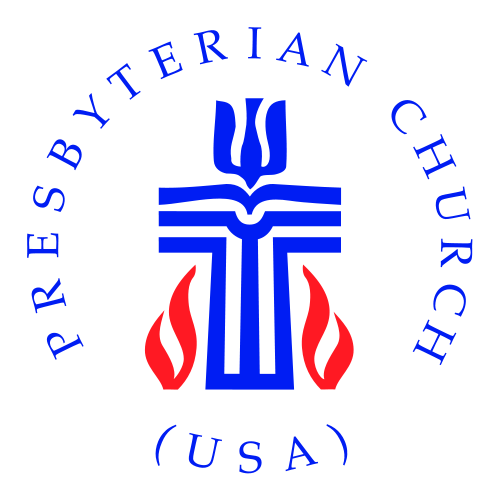Restorative action is an initiative for individuals, churches, presbyteries, and other groups of the Presbyterian Church (USA) to take a leadership stance in opposition to racism and racial privilege. Its premise is that it would further justice for churches and affiliated organizations to return benefits that have accrued to them directly or indirectly from systemic inequities. Our session has voted to return 15% of the proceeds of the sale of the Manse ($27,108.70) to the Nations of the Lenape. Below is a summary of how the church came to acquire Lenape land and the history of the Lenape Nation from the 17th century to the present.
The homeland of the Lenape Nation originally included Northern Delaware, Eastern Pennsylvania, all of New Jersey, the lower Hudson Valley, and Long Island. Several names have been used for the Lenape. The Lenape have called themselves Munsi and Unami, which are the names of the two dialects of their Algonquin language. European settlers called the Nation the Delaware - a non-indigenous word from Lord De La Warr - the first governor and captain-general of Virginia who explored the Delaware River and Bay in 1630.
This part of Southeast Pennsylvania was claimed by the Swedes, then the Dutch, and then Great Britain. William Penn founded Pennsylvania in 1681 when King Charles II granted him a charter for over 45,000 square miles of land. In 1682 Penn purchased the land which now includes Lansdowne from the "Kings" of the Lenape for a nominal amount of gold coins and trade goods (cloth, wampum, beer, guns, sewing needles, fish hooks, etc.) Shortly thereafter Penn granted a parcel of land which now includes Delaware County to the Woods family - a Quaker family from Derbyshire, England - this part of Delaware County was named Darby Township after their native Darbyshire. The Woods family sold some of the land to the Lobb family - another Quaker family with roots in Derbyshire. Charles Lobb donated a lot from his farm to the First Presbyterian Church of Lansdowne after his daughter married a Presbyterian. The Manse was built on the back of the property. The church purchased two lots on the corner of Lansdowne and Greenwood from a subsequent owner for our current sanctuary.
The Lenape were among the first indigenous nations to enter into treaties with Great Britain and its chartered colonies. The Lenape continued to enter into treaties with the United States for the next two centuries. Settler expansion and the violation of treaties by the United States forced most of the Lenape to move west to the upper Ohio Valley and the eastern Great Lakes region. The Lenape participated in Chief Pontiac's rebellion in the late 18th century and the resistance to the United States military with the Shawnee and the Six Nations of the Iroquois in the early 19th century. Smaller groups continued to resist until the late 19th century with the Lakota, Cheyenne, and Commanche in the northern and southern plains.
Settlers, militias, and the armed forces of the United States forced the Lenape into smaller and smaller territories. Eventually, most of the Nation was confined to reservations in Oklahoma, Kansas, Wisconsin, and Ontario. These groups eventually were recognized by the United States and Canadian governments.
A small remnant of the Nation never left their homeland. They could not live openly as Lenape because of the risk of expulsion and persecution. They could not rely on the government or courts to protect them. As indigenous people, they were not citizens of the United States until 1924. Some state laws denying Indigenous people the right to vote were not declared unconstitutional until 1960. To live as Lenape in their homeland they had to lay low in the region's backwoods and backwaters. This wasn't unique to the Lenape Nation; the Seminole people who remained in Florida sought sanctuary in the Everglades for the same reasons. Some of the remaining Lenape settled in the Appalachian Mountains from eastern Pennsylvania to the New York/New Jersey border. Others lived on the ridges above southeast Pennsylvania farmland and in isolated small towns in the pinelands and tidewater of South Jersey and Delaware. The eastern remnant of the Lenape people sheltered other marginalized people in their communities. Remnants of other indigenous nations were welcomed into and stayed with Lenape communities. They also welcomed free Black Americans and Black Americans who were fugitives from enslavement. Over the centuries Lenape families became blended families, but they maintained their Lenape identity as their history, culture, and traditions were handed down from generation to generation.
There are currently five Nations of the Lenape which are recognized by the governments of the United States and Canada. Two Nations are recognized by the state of New Jersey and one by the state of Delaware.
The Commonwealth of Pennsylvania is the only state in the Lenape homeland that has never recognized an indigenous tribe or nation. The Lenape Nation of Pennsylvania is currently seeking recognition by Pennsylvania. One difficulty in obtaining recognition for the Nations in New Jersey, Delaware, and Pennsylvania has been satisfying the identity or ancestry requirements of state and federal governments. People who had to conceal their identity and ancestry from governments for centuries to live in their homeland now have to prove their identities and ancestry to the satisfaction of these same governments.

